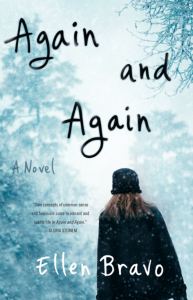My friend “Carol,” a school principal, got the call at lunch time just as she was leaving for the hustle-bustle of the cafeteria. The caller identified himself as an investigative reporter who’d tracked Carol down because she’d been good friends in college with a woman raped by a fellow student. That guy had gotten off scot free and was now a candidate for the U.S. Congress. It was up to Carol to stop him, the reporter insisted. The reporter happened to be from a Republican news outlet; the candidate was a Democrat.
None of that mattered to Carol. She cared only about what her friend wanted her to do. “No way am I reliving that,” the friend told her. End of story. No expose. The guy went on to win the Congressional seat.
As Carol was telling me this story, I couldn’t help but think, what it if were a lot more complicated? What if the woman wasn’t a school principal but an activist against sexual assault and exposing rapists was a big part of what her organization did? What if the candidate was a pro-choice Republican supported by feminist groups because they badly needed bipartisan support on women’s issues? What if the woman who’d been raped by this guy was the activist’s roommate in college and she’d actually walked in on the assault? What if the then budding activist had pushed her roommate to file a complaint and the process had gone really badly? And what if this woman’s husband today was a political consultant in need of a boost to his career, who’d just been assigned the campaign of the conservative Democratic opponent in this Senate race?
 That’s how Again and Again became the story of Deborah Borenstein, a woman whose decision could determine control of the Senate, the course of a friendship and the fate of a marriage.
That’s how Again and Again became the story of Deborah Borenstein, a woman whose decision could determine control of the Senate, the course of a friendship and the fate of a marriage.
I loved writing this book, but I had a lot of challenges. I wanted to create a novel about a social issue without sounding at all preachy. I grappled with how to reveal what an injury rape is without turning Liddie, Deborah’s roommate, into a victim. I needed to show the tension between Deborah and her husband Aaron, who doesn’t get why Liddie isn’t “over it” by now, and still celebrate him as a great guy and great father.
Deborah is a flawed character. I wanted the reader to see the confusion of someone learning to be an activist against rape, impatient with her friend for “giving the rapist too much power.” I wanted to explore what it means to grapple with making mistakes, take responsibility for bad judgment but not be sidelined by it.
The novel goes back and forth between the time of the rape and the campus hearing 30 years earlier, and a two-week period in Washington, DC in 2010. There wasn’t room for a lot of back story – I had to find telling details to show the reader why Liddie’s friendship was so important to Deborah, why she felt not just responsible but bereft when Liddie winds up leaving the college.
Deborah learns a lot from Marquita, her chief ally at work, who happens to be African-American. I’ll write more about the challenge of not turning this woman into a “black sidekick” and other issues dealing with race — what I learned and am still learning.
There were other challenges as well – how to write about the anger of child whose parents want her to share but aren’t letting her in on the source of big tension and complication in their lives; how to go back and forth in time between the two parts of the story; how to write about a city I’ve never lived in.
I had a wonderful writing group and a number of insightful friends who pushed and prodded and rooted for me throughout this process. The blurbs for the book are powerful validations. Gloria Steinem said I tackled these issues with a “vibrant and subtle” voice. Novelist Jacqueline Mitchard said “the story tugs you in and won’t let go.” Dr. Salamishat Tillet called it a “riveting page-turner.”
I’ll write more about the blurb process in my next column.
And you’ll be able to judge for yourself August 11!
Leave a Reply